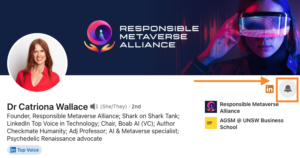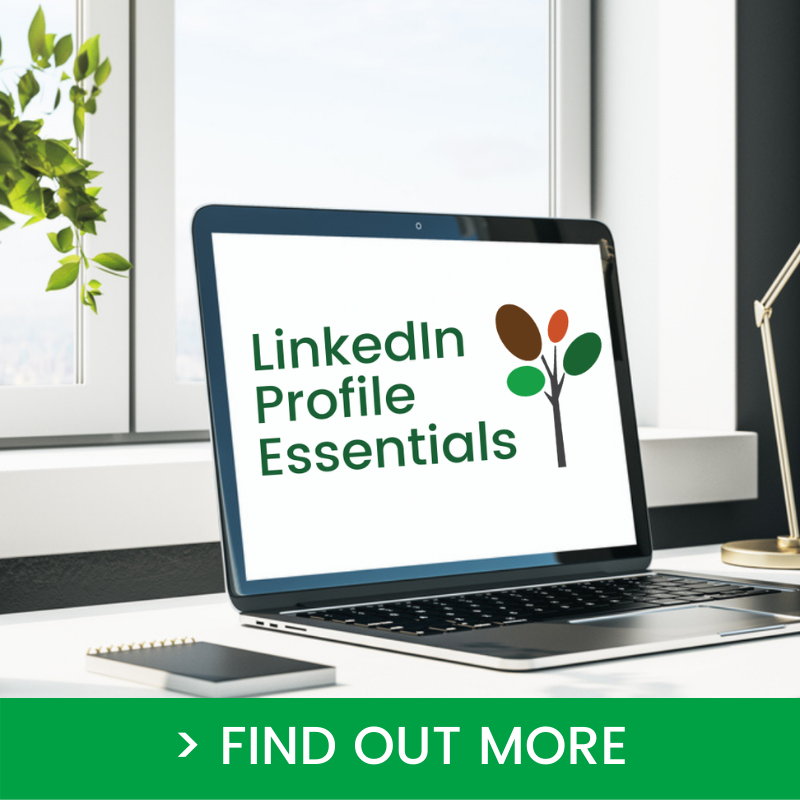How to Become a Thought Leader on LinkedIn
In this article you will learn how to become a thought leader on LinkedIn by leveraging many of the free LinkedIn profile and publishing features.
If you’re one of the quieter and more thoughtful subject matter experts and game changers I love working with, and you’re thinking about being more active on LinkedIn, I’m so glad you have found me.
When I talk about being a thought leader on LinkedIn. I am referring to the importance of having an opinion on pre-determined topics and sharing useful information with your LinkedIn community. You don’t have to be an academic or writer to be a thought leader on LinkedIn. You do need to have a clear sense of your values and purpose. You don’t have to get comfortable with sharing a ‘humble brag.
LinkedIn is more like a professional networking platform and less like social media. If you’re ‘not really a social media person’, that last sentence is probably good news! Being active on LinkedIn as a thought leader means being part of a community where you can lead and contribute to conversations in your areas of expertise.
Yes, thought leadership is about the content you create, but it’s also about the content you re-post and comment on. As a LinkedIn member you are part of a professional community and will be most effective where you contribute to conversations as well as share your own perspective.
Edelman-LinkedIn B2B Thought Leadership Impact Report
The latest Linkedin-Edelman B2B Thought Leadership Impact Report defines thought leadership as “content that offers expertise, guidance or a unique point of view on a topic or in a field. It includes content like thought pieces, essays, videos, webinars, live presentations, PowerPoint slides, and research reports that organizations make available to the public for free (or in return for registering or giving contact information).”
One of the key insights from this report is thought leadership that spurs business leaders to rethink their challenges is a powerful tool for stimulating demand for your business’s products and services.
How to Become a Thought Leader on LinkedIn
Here are the key areas to focus on to develop your thought leadership, and, when done well, leverage it as can a more powerful marketing tool than traditional methods and makes people more willing to seek you out – and even pay extra for your expertise.
Optimise your LinkedIn Profile
As a thought leader on LinkedIn, you can activate Creator Mode and access the publishing features available via your profile including the LinkedIn newsletter, LinkedIn Live and Audio events. It’s therefore important that your LinkedIn profile’s headline, About and featured sections, custom link (if you activate Creator Mode) are consistent with the topics you plan to focus on as a thought leader on LinkedIn.
Creator mode enables you to unlock the additional suite of features I mentioned for your LinkedIn profile. Please note – activating this feature requires a strategy to achieve your LinkedIn goals. Read more here about How to Decide if LinkedIn Creator Mode is for You.
If you’re new to LinkedIn, the idea of choosing topics and commenting on collaborative articles may feel overwhelming. That’s why I recommend you start with your profile. The list below highlights key areas I recommend you optimise (or fill in) on your LinkedIn profile. An optimised LinkedIn profile showcases a more complete story and helps you leverage the free thought leadership features available. There are many sections you can display on your profile. Here are the main ones we encourage you review and update.
- Name
- Profile photo
- Background image
- Headline
- Link in intro card (Creator mode)
- Featured Section
- About Section
Embrace the Power of LinkedIn
LinkedIn is like a virtual room, and your profile is you, networking as you. The behaviours are different to those expected of you on more ‘social’ platforms. It’s less about being a prolific content creator and more about being a community leader and strategic content curator. The LinkedIn Profile can be leveraged as your 24/7 online ambassador.
Your LinkedIn profile is a professional landing page for you to manage your own personal brand. It’s a great way for you to let people know who you are, what you do and how you can help by showcasing the relevant components of your professional experiences and achievements. I recommend you use your LinkedIn profile to add a personal touch to give people a sense of your unique approach and perspective, as well as your subject matter expertise.
Make LinkedIn your First Choice for Online Networking
To get maximum value from LinkedIn you need to commit to this platform as your first choice when you open your phone or look at your desktop each day. Why? Because showing up consistently and liking, commenting and posting value adding content is part of being a thought leader on LinkedIn.
Edelman identifies thought leadership as one the most effective tools an organisation can use to demonstrate its value to customers during a tough economy – even more so than traditional advertising or product marketing, according to B2B buyers. The good news is that cultivating your personal brand on LinkedIn also has personal benefits. Establishing your thought leadership online helps you be clearer about the impact you want to have on others and the difference you want to make for your community and, dare I say, the world! High performing thought leadership strikes a balance between being authoritative and thought provoking yet human in tone.
Stay Informed with the LinkedIn Newsfeed
Your LinkedIn newsfeed contains updates from your network, companies, and interests that you follow, recommended content, and sponsored content. You can customise your feed experience to ensure you’re engaging with conversations that matter to you. Unfortunately you can not influence the promoted posts in your newsfeed.
Take control of your LinkedIn newsfeed by reviewing My Network and curating which connections and companies you follow, newsletters you subscribe to and groups you contribute to. Your LinkedIn activity is what you follow, like, comment on, and who you message. This activity impacts the types of content seen in your feed.
Here are some ways to control and customise the content that appears in your feed:
- Follow, unfollow, or mute people and companies: If you want to get updates from a member or company on your feed, you can choose to follow them. You can also ‘ring the bell’ on the profile of an individual you follow or are connected to (see image above) to ensure you see all of their updates. You have the option to unfollow or mute an individual or company if you no longer want to see updates from them on your feed.
- Sort updates: You can control if your feed shows recent updates or top updates at the top of your LinkedIn homepage. This feature is only available on the desktop experience.
- Communication settings: Some of your feed updates may be delivered as push notifications and/or emails. You can control these by customising your email settings and push notification settings.
Share and Re-post Updates from Your LinkedIn Profile
Sharing a post from an authoritative source is a great way to establish your thought leadership by demonstrating you are part of a bigger conversation and have a perspective to add. Your LinkedIn homepage provides daily opportunities to learn about your network and share professional updates and content. You can post and share content on LinkedIn using the share box at the top of the LinkedIn homepage. What you share will depend on your focus for LinkedIn.Consider a mix of curated and original content.
Consider the role of the following content posting features to help build your thought leadership on LinkedIn:
- LinkedIn article (or LinkedIn newsletter, if you’re in Creator mode).
- PDF guides or reports.
- Polls designed to start a meaningful discussion
- Videos (or LinkedIn live, if you’re approved and have access to this feature).
- Photos of events you attend, lead or speak at (make sure you have people’s permission to share these so you can tag them and use alt text in images to ensure your photos are accessible to members with visual impairments). Thank people rather than brag about what you have achieved.
- Re-post updates from your organisation’s company page along with a commentary. Mention people and organisations if relevant.
If you’ve activated Creator mode I recommend you share content consistent with the 5 hashtags you commentate on. In this mode you also have the option to publish a regular newsletter and apply for LinkedIn Live.
Need help with LinkedIn?
Browse Think Bespoke’s website library and knowledge base for helpful articles about LinkedIn Training, LinkedIn Profile, LinkedIn Marketing and Career Management.





